
Friar's Head is about a thirty minute drive from Shinnecock, although in a distinctly different area. Shinnecock and the other great courses on the Eastern end of Long Island are located in the posh, consumption-oriented Hamptons. Baiting Hollow is quite a contrast. It is a quaint little town and a throw-back to the way most of Eastern Long Island used to be. It is still primarily a farming community, and approaching the course you drive past farms growing sod, corn, potatoes and past even vineyards.
The term "Friar's Head" is derived from a large sand formation that early sailors thought looked like a Friar's head when approaching this part of the North Shore from the water.
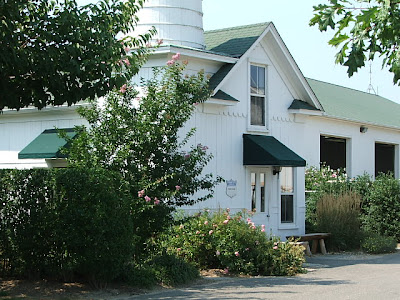 The current pro shop at Friar's Head
The current pro shop at Friar's HeadWhen you turn off the road and drive behind the high hedge rows and into the Friar's Head parking lot, it is clear that this is an understated affair. There is only room for about thirty cars, and the pro shop and caddie shack are old buildings left over from the farm that used to occupy this land.
The Golf Course
Friar's Head was built by the team of Bill Coore and Ben Crenshaw, and it has all their signature design features including the natural blown-out bunkers and wildly undulating greens.
The first and ninth holes are at the far end of the property, close to Long Island Sound. There is a new clubhouse under construction near these holes. Since the clubhouse is not finished, however, many groups start on the third hole (as we did), which is nearer to the driving range and club entrance. Friar's Head is a walking only course with caddies required, and a brisk pace of play is encouraged.
 The unique scorecard
The unique scorecard Take a quick look at the Friar's Head scorecard and see if you notice anything missing. Note that there are no yardages, no hole handicap rankings and no hole names. The lack of hole handicapping is apparently due to the shifting winds; hole difficulty depends upon the direction of the wind. Keeping with the natural feel of Friar's Head, no cart paths, no rakes anywhere (like Pine Valley) and no frills. There is no slope rating on the card either. I had to look up the Friar's Head slope rating from the Metropolitan Golf Association's website in order to post my humbling score. The slope and course rating are 74.1/144 from the back by the way.
The course is built on very sandy soil along a massively sloping ridge of land that rises up as it approaches the water. No holes play along the water and it is only visible from two or three holes. As you can see, the sand is a vibrant shade of white - it has the appearance of refined white sugar. This is the natural sand color and is in stark contrast to the more subdued sand color at other courses on Long Island. I'm highlighting the sand color here, because it really is one of the defining characteristics of the course and gives Friar's Head its unique look and feel, which some have likened to Cypress Point. Also, unlike many courses, which have very white sand in their bunkers, at Friar's Head, the sand is omnipresent and is not just in the bunkers.
The first hole bears some likeness to the second hole at Pine Valley, although, here the hole is a bit shorter. You hit your tee shot over a waste area to the fairway. Your second shot plays blind, sharply uphill to a fast green that slopes back to front and side to side.
The par five 2nd hole
The second hole, seen from the tee above, is a downhill par five with a snaking fairway.
7th fairway
The seventh fairway, seen above, shows the signature Coore/Crenshaw look, similar to their masterpiece at Sand Hills. At Friar's Head, on virtually every hole, there is a severe penalty for missing the fairway on the wrong side of the hole. On the fifth hole, missing to the right puts you in a waste area. Similarly, on the sixth and seventh holes, missing left puts you in the same waste area.
Also consistent with the Coore/Crenshaw design philosophy, there is usually a driveable par four on every course. At Friar's Head, the fifth hole is a short par four (280-290 yards if I remembered from the caddie correctly), with artfully placed, and difficult bunkers in the fairway in front of the green for those that dare go for it and miss.
The world-class par three 10th hole
The tenth hole, pictured above, starts off the back nine with a jolt. It is a very interesting par three that plays about 200 yards to a green that is semi-blind with a couple of very large sand dunes guarding the front. It took a great deal of imagination to design this hole. It would not be immediately intuitive that a hole would fit in this narrow corridor. The Long Island Sound is behind you when you are on the tee, and the wind is very tricky on this particular part of the course. This is exacerbated by the alley effect that is created between the rows of trees on either side of the green. It was also a brilliant decision to leave the over-sized sand dune on the left side, in front of the green.
The hole is all carry. Being just a few yards short leaves you in serious trouble, as I can personally attest to. Do I hear seven, anyone?
I thought that the back nine was clearly superior to the front nine. I thought the front, which is on the flatter terrain away from the water, was not as interesting. I absolutely hate to say anything negative about Coore or Crenshaw, since they are such gentlemen, and I love their overall design philosophy, but the front didn't grab me.
The best stretch of holes on the course are numbers fourteen through seventeen. This brilliant succession of holes include the par five uphill 14th, the downhill, signature par four 15th, the blind tee shot, par four 16th, followed by the postage-stamp, par three 17th.
14th hole
The fourteenth hole, pictured above, is a hole reminiscent of the second hole at Gullane's #1 course in Scotland. It plays up a big hill and the fairway gets narrower as it rises up. To the left of the hole is a massive blown-out sand dune. The green is interesting and, consistent with Coore/Crenshaw courses, has many humps and bumps.

Stairway to heaven
When you leave the fourteenth green, you walk up an infinity staircase, seen above, which looks like it rises to the heavens. Like all Coore and Crenshaw designs, everything fits into the natural surroundings beautifully.
The par four 15th hole
When you finish climbing the stairs after playing the fourteenth hole and continue walking up the hill, you then walk through a clearing of trees. You are now at the most dramatic vista on the golf course, which is the fifteenth tee box. The hole from the tee is pictured above.
15th green
The shot from the fifteenth tee plays down a large hill into a valley with the dog-legged fairway stretched out below you. Your second shot approaching the green plays uphill and has a false front, as do many of the greens at Friar's Head.
Fourteen and fifteen are as good a pair of back-to-back holes as you'll find in the world of golf. They are beautifully designed, challenging and offer great risk/reward options for all levels of golfer.
The seventeenth hole is a short par three with a postage-stamp size green and a dramatic fall off on the right side of the hole. As with many holes at Friar's Head, the penalty for being short or on the wrong side of the hole (the right side in this instance) is serious. Local lore has it that Raymond Floyd took double digits on this hole.
17th green
The Golf Bubble

Clubhouse at Friar's Head
The clubhouse at Friar's Head, which is still under construction, is pictured here, and it's a real monstrosity. There are also six cabins being built near the clubhouse for overnight stays. The clubhouse seems over the top to me. Everything else about Friar's Head is understated, but this looks like some sort of 21st century Gatsby contraption. The Eastern end of Long Island has always been a show place for Wall Street money, and when building becomes excessive it usually means it is not sustainable. This second 'golden age' of golf course architecture has been fueled by gangbusters economic growth in the world over the last 20+ years, allowing the new generation of newly-minted money-men to spend vast fortunes building their dream courses and clubhouses.
The building of a clubhouse like this seems to me to signal that we are probably getting near the end of the party, and the punch bowl will soon be taken away. The excesses of wealth have reached obscene proportions and the bell is ringing to indicate the end of the bull market. Not that I'm complaining about this, since its been one hell of a run and I've been privileged enough to experience many of these new world-class courses first hand.
Personally, I prefer the quaint, older and more understated original buildings and shingle style of architecture found on this part of Long Island. But then again, I have always preferred something like the clubhouses at Bandon Dunes or the under-stated style of clubhouse found at a place like Sunningdale or Royal Liverpool.
 The current pro shop at Friar's Head
The current pro shop at Friar's HeadFriar's Head has been rocketing up the world rankings since it was built in 2002. It made its debut at #71 and, on the most recent ranking, jumped all the way up to #33. Even though I am a major fan of Coore and Crenshaw designs and think that Sand Hills is probably the best course in the United States, I think Friar's Head is getting way ahead of itself. Having now played all the top courses on Long Island I would rank them in order: 1) National Golf Links of America; 2) Shinnecock; 3) Bethpage Black; 4) Garden City; 5) Sebonack; 6) Maidstone; 7) Friar's Head; 8) Piping Rock; and 9) Fishers Island.
No doubt there will be complete unanimity among my fan base regarding my well thought out rankings.

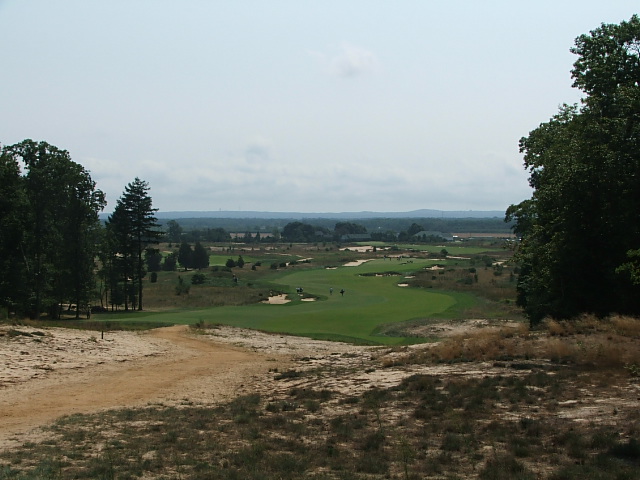
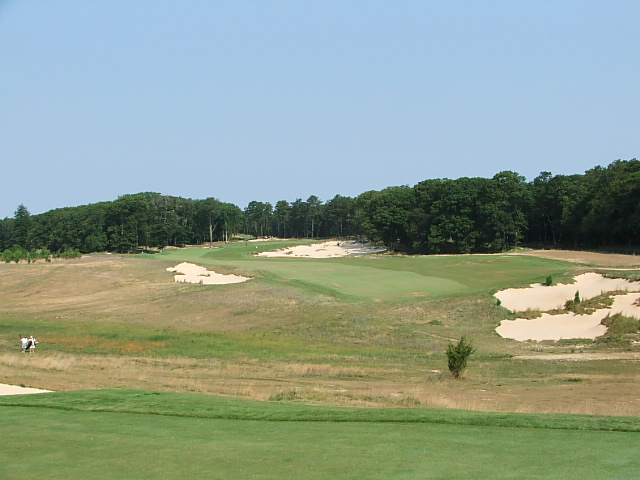
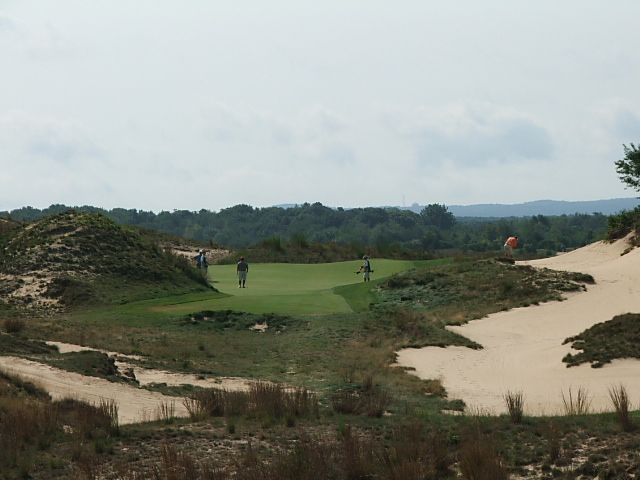
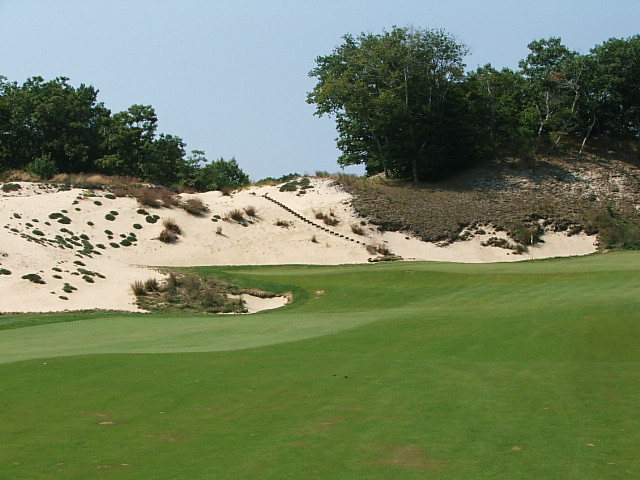
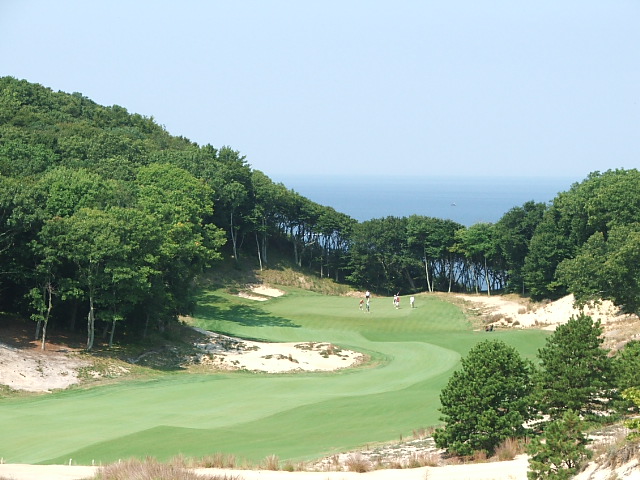
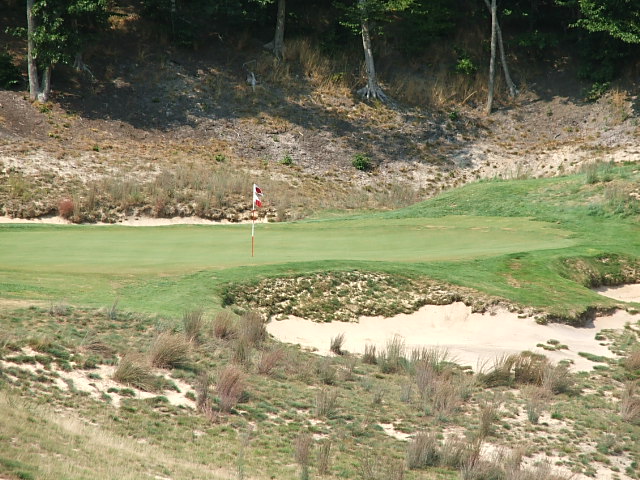


No comments:
Post a Comment